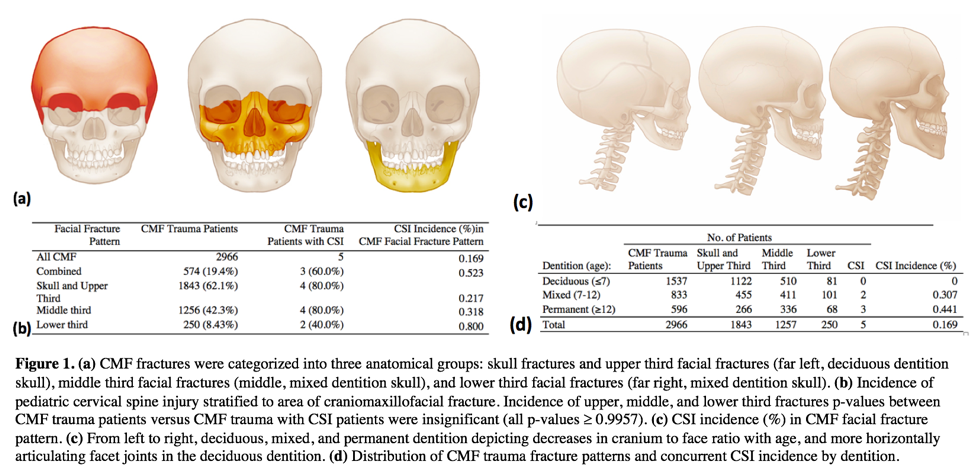CERVICAL SPINE INJURY IN ASSOCIATION WITH PEDIATRIC CRANIOMAXILLOFACIAL FRACTURES
Helen Xun, BS, Joseph Lopez, MD, MBA, Bart Kachniarz, MD, Groves Mari, Halley Darrach, Paul Manson, MD, Amir Dorafshar, M.B.Ch.B.
Johns Hopkins School of Medicine, Baltimore, MD, USA.
Background: In pediatric craniomaxillofacial (CMF) trauma patients, evaluation for cervical spine injury (CSI) is critical, but there is a paucity of clinical guidelines to screen for CSI in this unique population. Adult studies report incidence of CSI concurrent with CMF fractures as high as 24%, thus supporting imaging studies to detect CSI in all adult CMF fracture patients. Presently, there are no studies investigating the relationship between CMF fractures and CSI in the pediatric population.
Methods: A retrospective review of all pediatric patients (ages 0 -15) who presented to the Johns Hopkins Hospital Emergency Department from 1990 to 2010 with CMF fractures were examined for concurrent CSI injuries. Patient charts were reviewed for mechanism of injury, type and level of CSI, type and location of CMF fracture patterns, and overall outcome.
Results: A total of 2966 pediatric patients were identified to have suffered CMF fractures. Of these patients, only 5 children were found to have concomitant CSIs (0.169% incidence) (Fig. 1b). The incidence of CSI in CMF fracture patients were 0%, 0.307%, and 0.441% in deciduous, mixed, and permanent dentition children, respectively (Fig. 1d). Of the 5 identified cases, 4 had concomitant middle third facial skeleton fractures, 4 had concomitant upper thirds cranial skeletal fracture, and 2 had concomitant lower thirds cranial skeletal fractures.
Conclusion: The incidence of CSIs in pediatric CMF fracture patients (0.169%), is significantly lower than the reported ranges in adults (3.69 to 24%). No child with deciduous dentition (< 8yrs of age) was found to have CSI. The lack of CSI in deciduous CMF fracture patients could be explained by the anatomic differences between pediatric and adult cervical spines, and supports conservative imaging for children in this age group. 
Back to 2018 Posters




